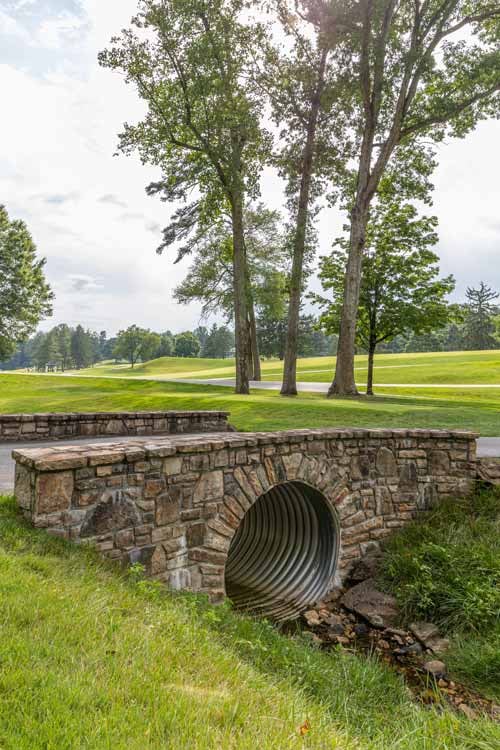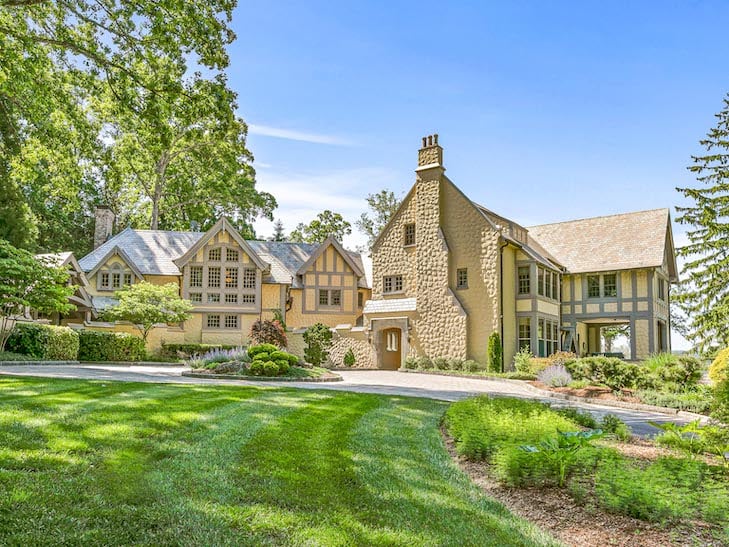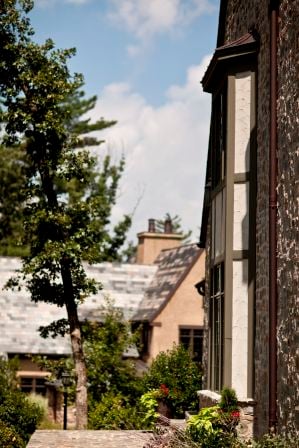

at Biltmore Forest

When a catastrophic flood damaged the Biltmore Estate in 1916, the trustees of the estate of George Vanderbilt sold 1,500 acres to make residential lots. The development project began in 1920, initially delayed by WWI.
It would be a residential park of the highest calibre, designed to embody the ideals of the Biltmore Estate at a smaller scale.
The town was formally chartered in 1923 and was deemed eligible for the National Register of Historic Places in 1990. Today, it is a self-contained suburb of 1,343 within the City of Asheville—a time capsule from the first half of the 20th century.
It is said that the Vanderbilts first dreamed of the Biltmore Forest Country Club after Edith, George Vanderbilt's wife, was forbidden from smoking at another club.
As a result, it's not surprising that the country club was considered an essential ingredient of the Biltmore Forest development project. The golf course would be designed by the legendary Donald J. Ross, while the clubhouse would be designed by Edward L. Palmer, with Chauncey Badly from the Biltmore Estate designing the landscape.
There was just one problem: The Biltmore Estate Company did not have enough funds to finish the club. Thankfully Edith's daughter, Cornelia, became the owner, financing furniture and equipment.
The club would later welcome a number of famous politicians, businesspeople, athletes, and other prestigious guests, including presidents William Howard Taft and Calvin Coolidge, John D. Rockefeller, and Queen Juliana of Holland.
It has also hosted a number of tournaments over the years, notably the Land of Sky Open tournaments from 1939 to 1942. It was during one of these that Ben Hogan said the course had the “greatest Par-four on the PGA tour.”


It's easy to feel as if you're walking through a living history museum in Biltmore Forest, with its sculpted landscapes and stately homes. In fact, the town was recognized by the National Register of Historic Places partly because of its architectural history.
The development includes buildings designed by William Waldo Dodge, Erle Stillwell, and Henry Irven Gaines.
Dodge was a particularly noteworthy figure, known to work in the Arts and Crafts, Tudor Revival, Rustic, and Colonial Revival styles.
A transplant to Asheville from D.C., he had the distinction of being both an architect and world-renowned silversmith. The latter trade he learned from his wife, Margaret.
They met at U.S. Hospital number 19 in Asheville where Margaret worked as an occupational therapist and Dodge happened to be recuperating from war injuries. The Dodges would later open up a silver smithing shop of their own on Charlotte Street in 1927.
Dodge, along with a few other architects and an engineer, created the Six Associates firm responsible for creating many historic buildings in the area, including some in Biltmore Forest.
W.W. Dodge's designs often feature finishing details from his other artistic practices, including leaded windows, lanterns, carvings, and paintings.
On their stroll through the neighborhood, visitors can encounter a variety of elegant architectural styles, including French Norman, English Manor, and Tudor homes.


Loading Failed
